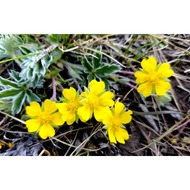The Benefits of Biodiversity
(View Complete Item Description)Students toss coins to determine what traits a set of mouse parents possess, such as fur color, body size, heat tolerance, and running speed. Then they use coin tossing to determine the traits a mouse pup born to these parents possesses. Then they compare these physical features to features that would be most adaptive in several different environmental conditions. Finally, students consider what would happen to the mouse offspring if those environmental conditions were to change: which mice would be most likely to survive and produce the next generation?
Material Type: Activity/Lab




















